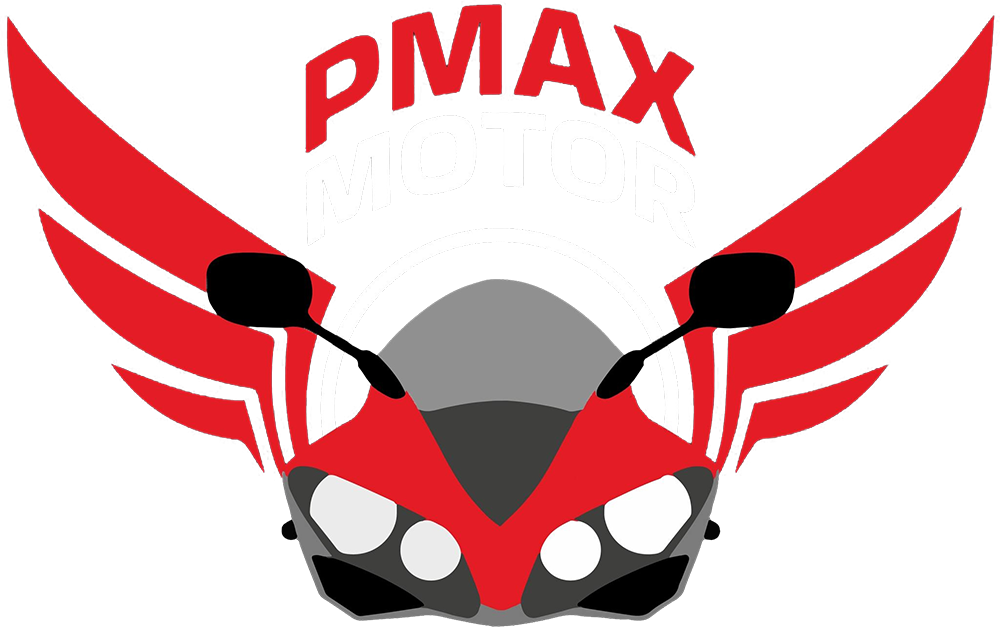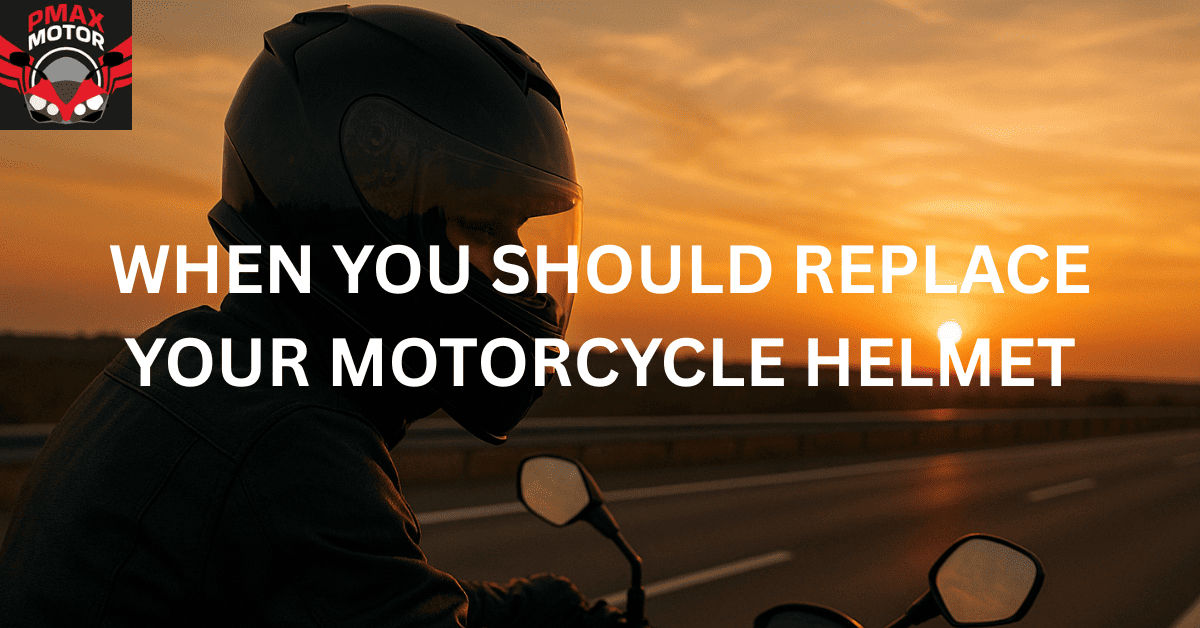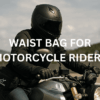No products in the cart.
Malaysians, here’s When You Should Replace Your Motorcycle helmet
Most helmet motor should be replaced every 3–5 years, even if they still look new.
Worn-out helmets might not show visible damage, but internal foam can fail silently. That puts your safety at serious risk on the roads.
If you’re riding daily in heat, leaving your helmet in the car, or unsure when you last bought one, you’re not alone. Many riders wait too long to replace a helmet simply because it still “looks okay.”
But there should be no cincai when it comes to helmet safety. This guide will help you identify the hidden signs of helmet wear, understand Malaysia-specific risks like UV and humidity, and show you when and why to upgrade your helmet in 2025.
Table of Contents
ToggleHow Long Does a Motorcycle Helmet Last in Malaysia?
The general rule of thumb is that a motorcycle helmet should be replaced every 3 to 5 years, depending on use and climate exposure, and immediately after a crash or road accident.
In Malaysia’s hot and humid weather, helmets wear out faster than in temperate countries. The intense sun, trapped moisture, and day-to-day handling all impact how long your helmet stays safe.
Factors That Shorten Helmet Lifespan in Malaysia:
- Frequent usage: Daily riding causes faster liner compression and foam fatigue
- Tropical climate: UV rays and heat degrade the outer shell and EPS foam
- Storage conditions: Leaving helmets in hot car boots or top boxes accelerates deterioration
- Sweat and rain: Moisture breaks down padding and adhesive layers over time
Recommended Helmet Replacement Timeline:
- Every 3 years: If you ride daily, store your helmet in the sun, or notice visible wear
- Every 5 years: For occasional riders who store helmets properly indoors
Even helmets that look fine on the outside can suffer from invisible internal breakdown. If you’re unsure, always err on the side of safety.
What Are the Signs That Your Helmet Needs Replacing?
A helmet can look perfectly fine on the outside, but still be dangerously compromised.
Visual damage isn’t the only thing to watch for. Many Malaysian riders continue using helmets that have internal damage from drops, heat, or prolonged wear, without realising it.
Key Signs Your Helmet Is No Longer Safe:
- Cracked or compressed EPS foam
This foam absorbs impact, and once crushed, it cannot protect you again. - Loose padding or degraded inner lining
If the padding shifts or thins out, the helmet will no longer fit snugly during impact. - Broken visor hinges or faulty chin straps
These mechanical failures reduce your helmet’s effectiveness during a crash. - Faded or brittle outer shell
UV damage weakens the shell’s integrity, even if there are no visible cracks. - Fit feels different
If your helmet suddenly feels loose or the fit has changed, it’s a red flag.
What If You Dropped It?
Even a waist-high drop can make a helmet unsafe, yes it’s that finicky.
Internal damage to the EPS (expanded polystyrene) liner may not be visible, but it compromises shock absorption. If your visor helmet has been dropped, especially on a hard surface rough like the road, replace it or have it professionally inspected.
Rule of thumb: If you’re unsure, don’t risk it. The cost of a new helmet is far less than the cost of a head injury.
Should You Replace Your Helmet After a Crash?
Motorcycle helmets are built to protect you once, not repeatedly. During a crash, the EPS liner compresses to absorb the energy of impact. That compression can’t be undone, even if the outer shell doesn’t show cracks.
Even if it looks “fine” after you dust off the grime and cracks, the damage is already done. Here’s why:
- Internal damage is often invisible
Crushed foam may not show on the surface, but it weakens overall protection. - Safety design is single-use
Like an airbag, your helmet is meant to take one hit and then be retired. - Secondary impacts are riskier
A compromised helmet won’t protect your skull or brain in the next fall.
“Once compromised, even slightly, a helmet no longer offers full protection.”- PMAX Consultant.
Do Helmets Expire If Never Used?
Just because a helmet has never been worn doesn’t mean it’s still safe. Age alone affects the protective properties of your helmet, even if it’s been sitting untouched on a shelf.
Why Unused Helmets Still Expire:
- EPS foam dries out
This impacts its ability to absorb shock during impact. - Shell resin and glue degrade
Exposure to air and humidity causes gradual breakdown, especially in tropical climates. - Rubber, padding, and straps become brittle
These components lose flexibility, making them more likely to fail under pressure.
Manufacturers like Shoei and Arai recommend replacing helmets every 5 years from the manufacture date, regardless of usage.
What You Should Check
Look for the manufacture date label inside the helmet, usually beneath the liner or padding. If it’s older than 5 years, it’s not suitable for active riding even if it looks brand new.
Tip: Don’t confuse the purchase date with the manufacture date. Buying old stock on sale may give you a helmet already near expiry.
Does Malaysian Heat & Humidity Shorten Helmet Life?
Malaysia’s hot, humid climate causes helmets to break down faster than in cooler countries. High temperatures, constant sun exposure, and moisture from rain or sweat all take a toll on your helmet’s structure and safety materials.
- EPS foam weakens in extreme heat
Heat exposure softens the foam, reducing its ability to absorb impact. - Sweat and humidity degrade liners
Inner padding absorbs moisture, leading to bacterial buildup and material fatigue. - UV rays fade and weaken outer shells
Prolonged exposure to direct sunlight makes the outer shell brittle and prone to cracking.
“In 35°C traffic or when parked under the sun, helmet temperatures can exceed 50°C, speeding up material fatigue.” Pmax’s motorcycle consultant
Care Tips for Riders:
- Store indoors: Keep your helmet in a cool, dry place away from direct sunlight.
- Avoid car boots: The heat inside parked vehicles accelerates breakdown.
- Dry after rides: Air out the helmet after sweaty rides to prevent moisture buildup.
If you ride under the sun daily, expect your helmet to wear out closer to the 3-year mark, regardless of how it looks.
What Should You Look for When Buying a New Motorcycle Helmet?
Okay, so you come to realise that the helmet you bought after passing your license might be “unsafe” and you want to buy a new one. I
f you’re replacing your old helmet, take the time to find one that offers proper protection and is legal for use on Malaysian roads.
Key Features to Check Before You Buy:
- SIRIM Certification Sticker
This is mandatory for road use in Malaysia. Look for the SIRIM label at the back of the helmet. It ensures the product meets local safety standards for:- Impact absorption
- Strap strength
- Penetration resistance
- Helmets without a SIRIM sticker will get you fined by JPJ and are often excluded from insurance claims, and an awkward conversation with roadblock officers.
- Correct Helmet Size & Fit
A helmet should sit snugly on your head without movement. Test it by shaking your head side-to-side. There should be no looseness, but no pain either, just like wearing a pair of shoes. - EPS Liner Quality
Check the interior padding and foam thickness. Avoid helmets that feel flimsy or have uneven padding. - Ventilation & Comfort Features
Especially important in Malaysia’s climate, look for:- Breathable liner materials
- Vent holes for airflow
- Removable, washable padding
- Recent Manufacture Date
Always check the label under the padding for the manufacture date, not the purchase date. Avoid buying old stock that’s already years into its lifespan, even if it’s on a promotion or discount. - Secure Visor Mechanism & Strap Fastening
Test the visor for smooth opening/closing and check if the chin strap is strong, adjustable, and locks securely.
Tip: If you’re buying online, choose a shop like Pmax Motor, which only stocks SIRIM-approved helmets and displays manufacture dates clearly.
Still Unsure? Here’s a Quick Helmet Health Checklist
Not sure if your helmet is still safe? Use this checklist to find out.
Go through the list below. If you check two or more, it’s strongly recommended you replace your helmet immediately.
Helmet Health Self-Check:
- My helmet is more than 5 years old (check the manufacture date inside)
- It has been dropped or involved in a crash, even a minor one
- The fit feels loose or has changed noticeably over time
- The EPS foam or inner padding looks cracked, compressed, or worn out
- The strap or buckle is damaged, fraying, or doesn’t lock securely
- The outer shell is faded, scratched, or brittle from sun exposure
- The SIRIM certification sticker is missing or peeling off
- I store my helmet in a hot car boot or direct sun regularly for 3 – 5 years
- I ride daily in heavy traffic, exposing my helmet to constant sweat and wear for 3 years
Two or more checks? It’s time for a new, SIRIM-approved helmet.
Read more: How to Choose The Perfect Motorcycle Helmet in Malaysia
Final Word from Pmax: Don’t Wait Until It’s Too Late
At Pmax motor, we’ve seen too many riders hang on to helmets that look fine, but no longer offer real protection.
In Malaysia’s tropical climate, even the best gear won’t last forever. If your helmet has passed the 3–5 year mark, survived a drop, or feels less secure than it used to, it’s not worth the risk.
We only stock SIRIM-certified helmets such as KYT, Shoei, Arai and LS2, because your safety deserves more than guesswork.
Whether you ride daily or occasionally, replacing your helmet on time is one of the smartest decisions you can make on the road. Trust us, your safety ain’t worth the risk.
Frequently Asked Questions About Helmet Replacement in Malaysia
How Often Should I Replace My Motorcycle Helmet In Malaysia?
Every 3–5 years, or immediately after a crash.
Is It Safe To Use A 7-Year-Old Helmet That Was Never Used?
No. Materials degrade over time, even if the helmet looks new.
What is the difference between SIRIM and DOT helmets?
SIRIM is Malaysia’s local standard. DOT is a US standard. For Malaysian roads, SIRIM is mandatory.
Does Dropping Your Helmet Really Make It Unsafe?
Yes, if dropped from significant height. Internal foam can compress even without visible cracks.
Can I Still Use A Helmet If The Strap Is Loose But Everything Else Is Fine?
No. Strap failure in a crash means the helmet may come off, nullifying protection.
Where Can I Buy A Certified Replacement Helmet In Malaysia?
Visit trusted shops like Pmax Motor, which offers SIRIM-certified helmets suited for local conditions.
Tags: motorcycle jacket



